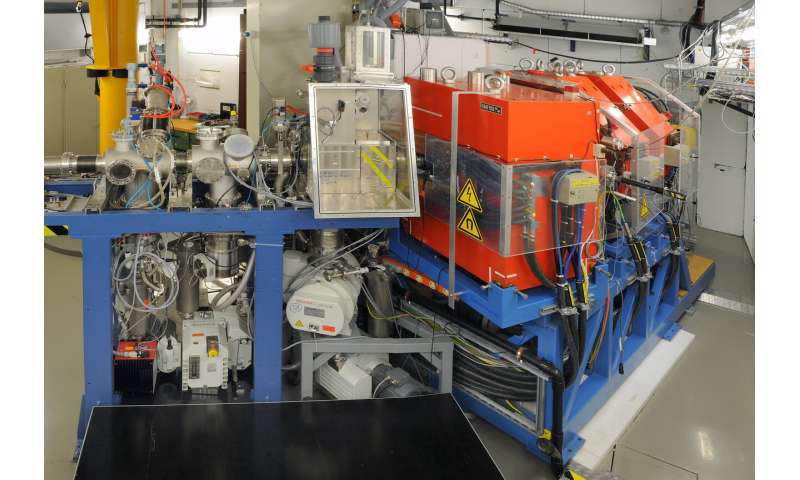Nuclear physicist's voyage toward a mythical island

Theories were introduced as far back as the 1960s about the possible existence of superheavy elements. Their most long-lived nuclei could give rise to a so-called "island of stability" far beyond the element uranium. However, a new study, led by nuclear physicists at Lund University, shows that a 50-year-old nuclear physics manifesto must now be revised.
The heaviest element found in nature is uranium, with a nucleus containing 92 protons and 146 neutrons. The nuclei of heavier elements become more and more unstable due to the increased number of positively charged protons. They therefore decay faster and faster, usually within a fraction of a second.
A "magical" combination of protons and neutrons may however lead to elements with rapidly increasing lifetimes. Just such a "magical" number of protons has long been predicted for the element flerovium, which has the atomic number 114 in the periodic table. In the late 1960s a theory was introduced by Lund physicist Sven-Gösta Nilsson, among others, that such an island of stability should exist around the then still undiscovered element 114.
"This is something of a Holy Grail in nuclear physics. Many dream of discovering something as exotic as a long-lived, or even stable, superheavy element," says Anton Såmark-Roth, doctoral student of nuclear physics at Lund University.
Inspired by Nilsson's theories, the researchers have studied the element flerovium in detail and made ground-breaking discoveries. The experiment was conducted by an international research team led by Dirk Rudolph, a professor at Lund University.
Within the framework of the research program FAIR Phase-0 at the particle accelerator facility GSI Helmholtzzentrum für Schwerionenforschung in Darmstadt, Germany, up to 61,018 (6,000,000,000,000,000,000) calcium-48 atomic nuclei were accelerated to 10% of the speed of light. They bombarded a thin film of rare plutonium-244 and, through atomic nuclear fusion, flerovium could be created, one atom at a time. In the 18-day-long experiment, the research team then registered radioactive decay of some tens of flerovium nuclei in a detection device specially developed in Lund.
Through the exact analysis of decay fragments and the periods within which they were released, the team could identify new decay branches of flerovium. It was shown that these could not be reconciled with the element's previously predicted "magical" properties.
-

By means of a silicon detector system inside a vacuum chamber surrounded by new germanium detectors, the energy and time of arrival of the flerovium nuclei and their decay products, e.g. alpha particles, electrons or fission products, as well as X-rays and gamma rays, were registered. Credit: A. Såmark-Roth, Lund University -

The calcium beam from the UNILAC accelerator passed through the beamline visible on the left of the image to the target area (center of image) where nuclear fusion leading to flerovium production took place. The nuclear reaction products and the unreacted calcium beam then passed through the magnets visible in red on the right, which isolated the flerovium nuclei from all other particles. Flerovium then entered the detection apparatus at the end of the separator. Credit: G. Otto, GSI/FAIR
"We were very pleased that all the technology surrounding our experimental set-up worked as it should when the experiment started. Above all, being able to follow the decay of several flerovium nuclei from the control room in real time was very exciting," says Daniel Cox, postdoc in nuclear physics at Lund University.
The new results, published in the research journal Physical Review Letters, will be of considerable use to science. Instead of looking for the island of stability around the element 114, the research world can focus on other as yet undiscovered elements.
"It was a demanding but, of course, very successful experiment. Now we know, we can move on from element 114 and instead look around element 120, which has not been discovered yet. Now the voyage to the island of stability will take a new course," concludes Anton Såmark-Roth.
More information: A. Såmark-Roth et al. Spectroscopy along Flerovium Decay Chains: Discovery of Ds280 and an Excited State in Cn282, Physical Review Letters (2021). DOI: 10.1103/PhysRevLett.126.032503
Journal information: Physical Review Letters
Provided by Lund University





















